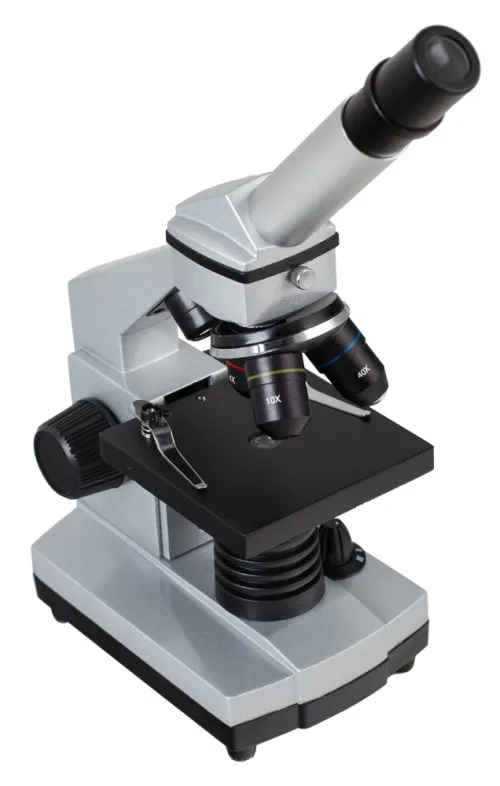Bresser Junior 40–1024x Microscope, with Case
Magnification: 40–1024x. Experiment kit included
| Product ID | 26754 |
| Brand | Bresser GmbH, Germany |
| Warranty | 2 years |
| EAN | 4007922152738 |
| Package size (LxWxH) | 15x40x27 cm |
| Shipping Weight | 2.782 kg |
More than a classic microscope. It has a robust finish, a case for easy transportation, is versatile and can be connected to your PC.
Equipped with the Bresser Junior Microscope, young scientists can turn small samples into large discoveries. Thanks to the zoom function, which has a 40–1024x magnification, all types of microscopy are available to young researchers.
Transmitted light microscopy: For the observation of cell structures, onion skin in addition to a corresponding high magnification in the first instance wafer-thin samples are required, so that the light can shine through. But don't worry, for the beginning there are already some permanent preparations included in the set and additionally the necessary accessories to prepare further ones by yourself.
The included Smartphone adapter, allows you to save pictures and videos on your smartphone or share them with friends and family.
Features:
- Standard eyepiece(s): 2 Widefield eyepieces (WF-10x and WF-16x)
- Standard objectives: 4x, 10x, 40x
- Magnifaction: 40x–1024x
- Illumination: bright LED-light for transmitted and incident light microscopy
- Accessories: lot of extras for an immidiate start in the microscopy
The kit includes:
- Digital microscope Bresser Junior 40x–1024x
- Zoom eyepiece 10x–16x
- Barlow lens
- 10 slides
- 10 coverslips
- 5 prepared slides
- Shrimp hatchery
- Tweezers
- Pipette
- Software
- User Manual
| Product ID | 26754 |
| Brand | Bresser GmbH, Germany |
| Warranty | 2 years |
| EAN | 4007922152738 |
| Package size (LxWxH) | 15x40x27 cm |
| Shipping Weight | 2.782 kg |
| Type | biological, light/optical, digital |
| Microscope head type | monocular |
| Optics material | optical glass |
| Magnification, x | 40 — 1024 |
| Eyepieces | WF10x, WF16x, video eyepiece |
| Objectives | 4x, 10x, 40x |
| Body | plastic |
| Illumination | LED |
| User level | elementary |
| Application | school/educational |
| Digital camera included | ✓ |
| Barlow lens | 2x |
| Pouch/case/bag in set | case, dust cover |
| System requirements | Windows XP/Vista/7 (32 and 64 bit); 1.6GHz or above, 1GB RAM, 2GB hard drive, USB 2.0, CD/DVD-ROM |
We have gathered answers to the most frequently asked questions to help you sort things out
Find out why studying eyes under a microscope is entertaining; how insects’ and arachnids’ eyes differ and what the best way is to observe such an interesting specimen
Read this review to learn how to observe human hair, what different hair looks like under a microscope and what magnification is required for observations
Learn what a numerical aperture is and how to choose a suitable objective lens for your microscope here
Learn what a spider looks like under microscope, when the best time is to take photos of it, how to study it properly at magnification and more interesting facts about observing insects and arachnids
This review for beginner explorers of the micro world introduces you to the optical, illuminating and mechanical parts of a microscope and their functions
Short article about Paramecium caudatum - a microorganism that is interesting to observe through any microscope

















